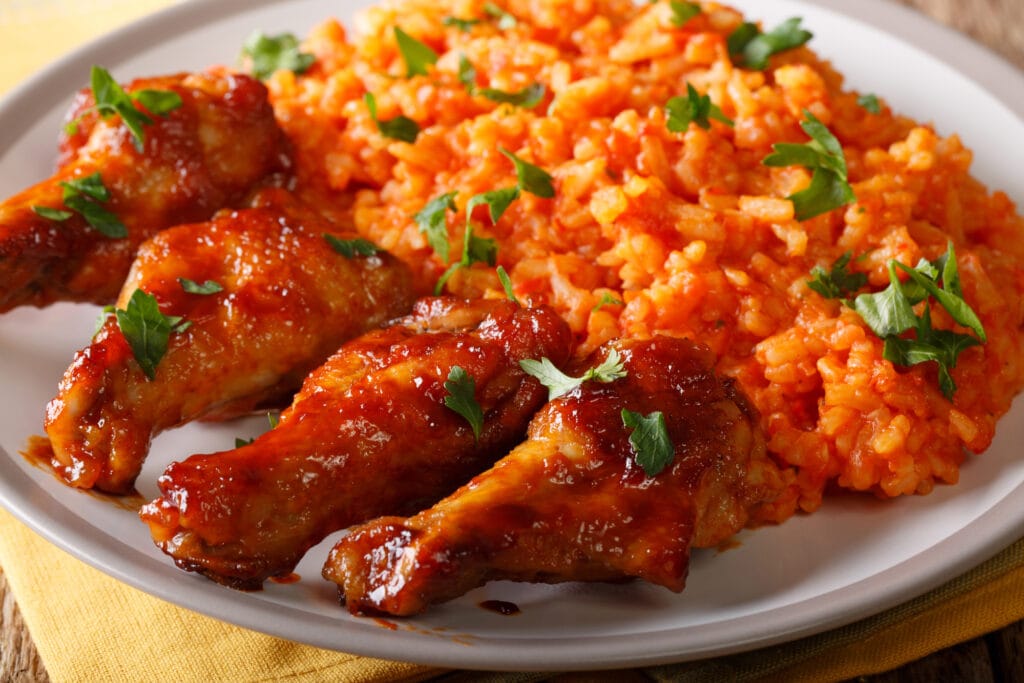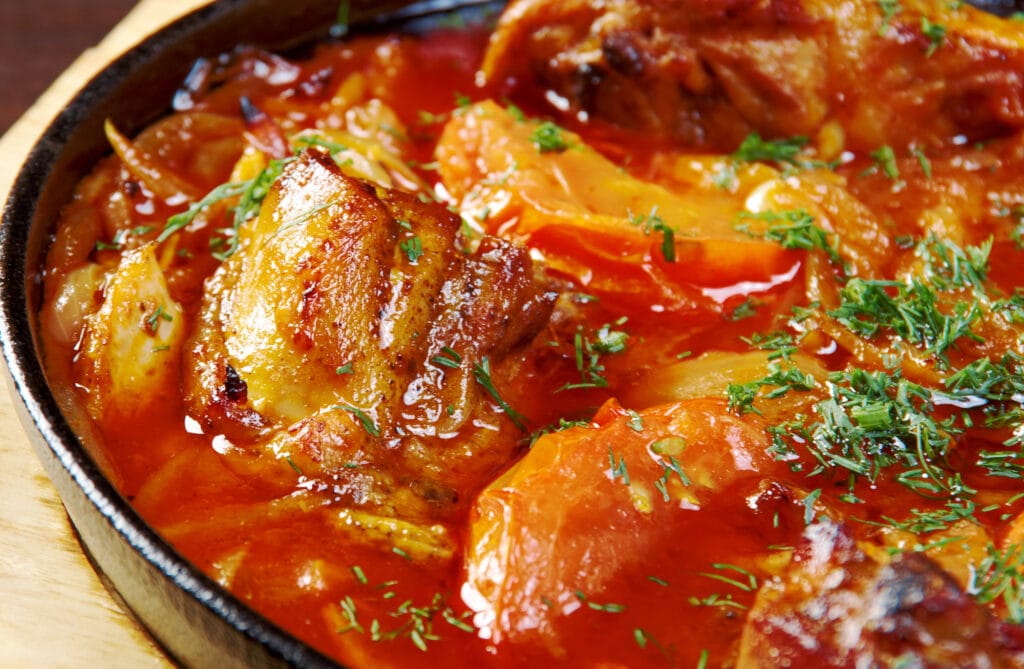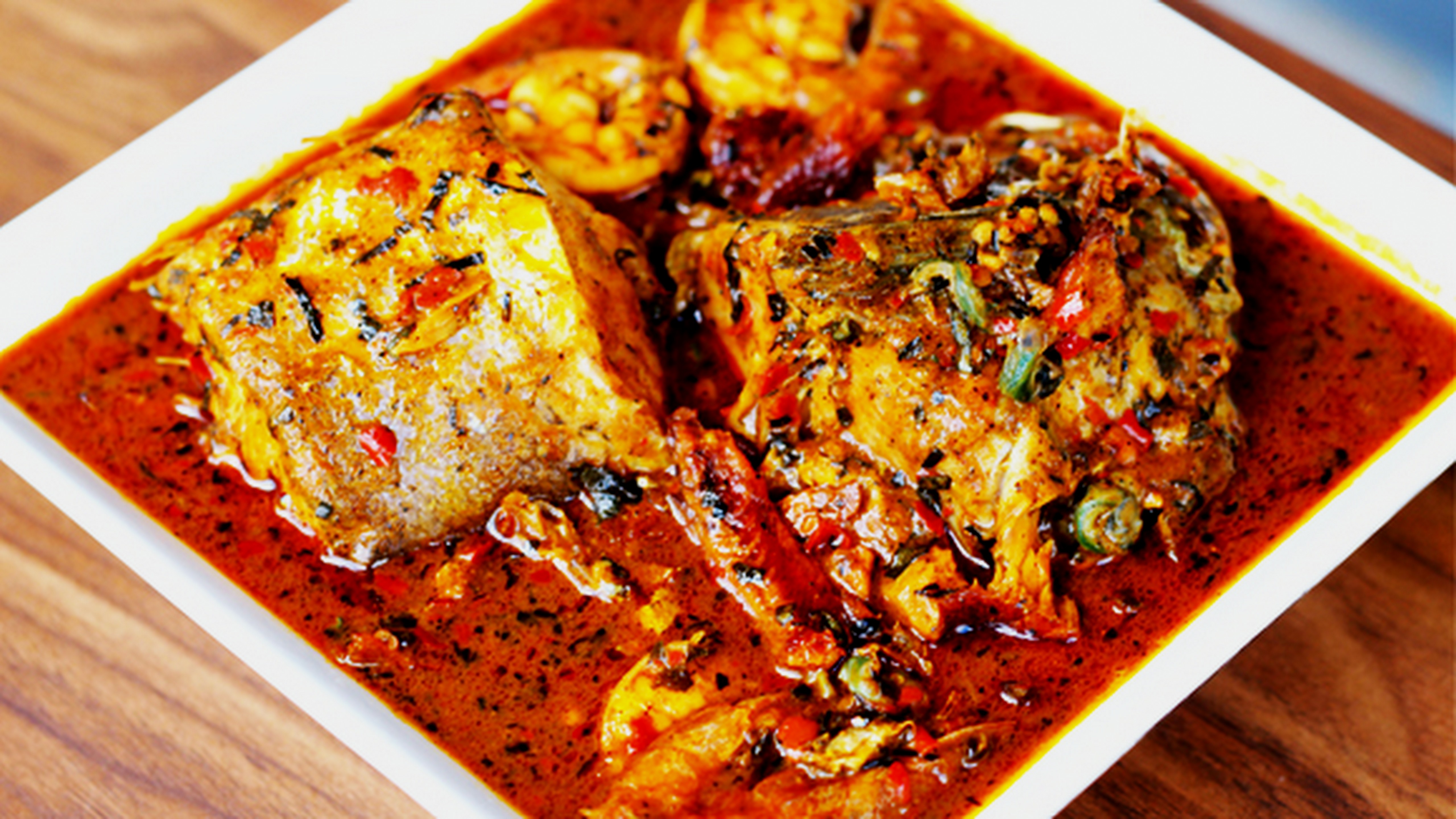Delve into the colourful world of West African meals, a culinary tapestry woven with centuries of historical past, cultural influences, and numerous regional flavors. From the bustling markets of Senegal to the fragrant streets of Ghana, West African delicacies tantalizes style buds and nourishes our bodies with its distinctive mix of spices, components, and cooking methods.
This complete information explores the culinary heritage, staple components, cooking strategies, regional specialties, well being advantages, cultural significance, trendy interpretations, and standard dishes of West African delicacies. Put together to embark on a gastronomic journey that may go away you yearning for extra.
Culinary Heritage of West Africa
West African delicacies is a vibrant tapestry of flavors and textures, a testomony to the area’s wealthy historical past and cultural range. Its culinary heritage has been formed by centuries of interactions between indigenous communities, merchants, and colonizers, leading to a singular mix of influences.
The area’s numerous geography and local weather have additionally performed a major function in shaping its delicacies. From the arid Sahel to the plush coastal areas, every sub-region boasts its personal culinary specialties, reflecting the supply of components and the affect of native traditions.
Regional Variations
West Africa’s regional variations in delicacies are a testomony to the area’s cultural range. Every sub-region has its personal distinctive culinary traditions, influenced by native components, cultural practices, and historic interactions.
- Sahel Area:Identified for its use of millet, sorghum, and different drought-tolerant grains, in addition to dishes like couscous and tagine.
- Coastal Area:Characterised by way of seafood, coconut, and spices, with dishes like jollof rice and palm wine soup.
- Forest Area:Identified for its use of plantains, yams, and leafy greens, in addition to dishes like fufu and egusi soup.
Staple Components and Cooking Methods
West African delicacies is famend for its vibrant flavors and numerous components. The area’s staple meals kind the muse of many dishes, and conventional cooking strategies convey out their distinctive traits.
Grains, resembling rice, millet, and sorghum, are broadly consumed in West Africa. They’re usually cooked into stews or porridges, offering a filling and nutritious base for meals.
Legumes
Legumes, together with beans, lentils, and cowpeas, are one other important ingredient in West African cooking. They’re wealthy in protein and fiber, and they’re usually utilized in soups, stews, and salads.
Greens
Greens play a major function in West African delicacies. Okra, tomatoes, onions, and peppers are generally used, including taste and coloration to dishes. Leafy greens, resembling spinach and amaranth, are additionally standard and supply important nutritional vitamins and minerals.
Spices
Spices are an integral a part of West African cooking. They add warmth, depth, and complexity to dishes. Widespread spices embrace chili peppers, ginger, garlic, cumin, and coriander.
Cooking Strategies, West african meals
West African cooking strategies differ relying on the area and the dish being ready. Grilling, stewing, and frying are among the commonest methods.
Grilling
Grilling is a well-liked technique for cooking meats, fish, and greens. It imparts a smoky taste and a crispy texture.
Stewing
Stewing is a slow-cooking technique that permits flavors to develop and mix. Stews are sometimes made with a mixture of meats, greens, and spices.
Frying
Frying is a flexible cooking technique that can be utilized to create a wide range of dishes. It’s usually used to prepare dinner plantains, yams, and different root greens.
Fashionable Dishes
West African delicacies affords a variety of standard dishes that showcase the area’s staple components and cooking methods. A number of the most well-known dishes embrace:
- Jollof rice: A flavorful rice dish made with tomatoes, onions, peppers, and spices.
- Fufu: A dough constituted of pounded yams or plantains, served with soups or stews.
- Egusi soup: A wealthy and nutty soup made with floor melon seeds, greens, and meat or fish.
- suya: Grilled meat skewers seasoned with spices.
Regional Delicacies and Specialties
West Africa is a various area with a wealthy culinary heritage. Every area has its personal distinct flavors and dishes, reflecting the cultural influences and native components out there.
Here is a desk summarizing among the signature dishes, distinctive components, and cultural influences discovered in numerous areas of West Africa:
Senegal
- Thiéboudienne: A conventional Senegalese dish made with fish, rice, greens, and a flavorful tomato-based sauce.
- Yassa: A rooster or fish dish marinated in a citrus-based sauce and grilled or baked.
- Maafe: A peanut-based stew served with rice or couscous.
Nigeria
- Jollof rice: A preferred rice dish cooked with tomatoes, peppers, onions, and spices.
- Egusi soup: A soup made with floor melon seeds, greens, and meat or fish.
- Amala: A starchy dish constituted of yam flour and served with a wide range of soups.
Ghana
- Fufu: A starchy dish constituted of pounded yams or plantains and served with numerous soups and stews.
- Banku: A fermented cornmeal dough served with soups and stews.
- Kenkey: A fermented cornmeal dough wrapped in corn husks and steamed.
Well being Advantages and Dietary Worth

West African delicacies affords an abundance of well being advantages resulting from its emphasis on contemporary, entire components. Widespread dishes and components are wealthy in nutritional vitamins, minerals, and antioxidants, supporting general well-being and wholesome diets.
Consuming West African meals has been related to lowered danger of persistent ailments resembling coronary heart illness, stroke, and sort 2 diabetes. The fiber content material in lots of dishes aids digestion and promotes satiety, whereas the abundance of antioxidants helps shield in opposition to oxidative stress and irritation.
Dietary Worth of Widespread Components
- Grains and Legumes:Entire grains like fonio and millet are wealthy in fiber, B nutritional vitamins, and minerals. Legumes resembling black-eyed peas and lentils present protein, iron, and folate.
- Greens:West African delicacies options a wide range of greens, together with okra, spinach, and tomatoes. These are wonderful sources of nutritional vitamins A, C, and Okay, in addition to antioxidants.
- Fruits:Fruits like mangoes, pineapples, and bananas are ample in nutritional vitamins, minerals, and fiber. They contribute to general well-being and help wholesome pores and skin and digestion.
- Spices and Herbs:Spices like ginger, turmeric, and chili peppers have anti-inflammatory and antioxidant properties. Herbs like basil and parsley present nutritional vitamins and minerals.
Dishes that Promote Nicely-being
- Fufu with Egusi Soup:This standard dish combines starchy fufu with a protein-rich egusi soup. It supplies fiber, protein, and important nutritional vitamins and minerals.
- Jollof Rice:This flavorful rice dish is wealthy in tomatoes, onions, and peppers. It affords nutritional vitamins A, C, and lycopene, an antioxidant linked to lowered danger of persistent ailments.
- Akara (Fried Bean Desserts):These crispy bean desserts are a very good supply of protein, fiber, and iron. They are often loved as a snack or as a part of a meal.
Cultural Significance and Social Affect

West African delicacies holds immense cultural significance, deeply interwoven with the material of society. Meals transcends mere sustenance; it serves as a potent image of id, neighborhood, and heritage.
Meals in Festivals and Celebrations
West African meals performs a pivotal function in festivals and celebrations, embodying the collective spirit and pleasure of the neighborhood. Throughout the annual harvest pageant of Yam, as an illustration, elaborate dishes that includes yam are ready and shared, honoring the staple crop and celebrating the abundance of the land.
Group Gatherings and Social Cohesion
Meals serves as a catalyst for social cohesion in West Africa. Group gatherings usually revolve round shared meals, fostering a way of belonging and strengthening bonds amongst neighbors and relations. Conventional dishes like fufu and jollof rice are ubiquitous at such occasions, selling unity and convivial eating experiences.
Financial and Cultural Alternate
West African delicacies has had a profound financial and cultural affect, each inside the area and past. The trans-Saharan commerce routes facilitated the alternate of components, methods, and culinary concepts, resulting in the unfold of West African dishes throughout North Africa and Europe.
At present, West African delicacies continues to be a supply of satisfaction and cultural alternate, showcasing the area’s wealthy culinary heritage to the world.
Trendy Interpretations and Fusion Delicacies

West African delicacies has witnessed a exceptional evolution, adapting to trendy culinary tendencies and embracing fusion dishes that mix conventional flavors with international influences. Progressive cooks and eating places are pushing the boundaries of West African gastronomy, creating thrilling and delectable dishes.
Fusion Dishes
Fusion dishes mix West African components and flavors with parts from different cuisines. This artistic strategy permits for a variety of culinary potentialities, from dishes that subtly incorporate overseas influences to people who boldly juxtapose contrasting flavors. Examples embrace:
- Jollof Paella:A fusion of the traditional West African rice dish Jollof with the Spanish seafood paella, that includes aromatic rice, succulent seafood, and vibrant greens.
- Egusi Gnocchi:A novel mixture of West African egusi melon seeds with Italian gnocchi, making a savory and nutty dish served with a flavorful tomato sauce.
Progressive Cooks and Eating places
Progressive cooks and eating places are main the cost in modernizing West African delicacies. They’re experimenting with new methods, reimagining conventional dishes, and introducing contemporary views to the culinary panorama. Notable examples embrace:
- Chef Kwame Onwuachi:A James Beard Award-winning chef who blends West African flavors with American delicacies, creating dishes that showcase the richness and flexibility of each cultures.
- Teranga Restaurant:A Michelin-starred restaurant in London that gives a contemporary tackle Senegalese delicacies, that includes refined dishes that elevate conventional flavors to new heights.
Fashionable Dishes and Delicacies
West African delicacies is a various and flavorful tapestry of culinary traditions, boasting a wide selection of standard dishes and delicacies. These dishes, deeply rooted in native cultures and traditions, showcase the area’s wealthy agricultural heritage and culinary ingenuity.
From hearty stews to savory grilled meats and refreshing salads, West African delicacies affords a tantalizing journey for the style buds. Here’s a checklist of among the most beloved dishes, every with its distinctive origins, components, and preparation strategies:
Jollof Rice
- Origins:Jollof rice is a one-pot dish originating from the Wolof folks of Senegal. It has turn out to be a staple dish all through West Africa and past.
- Components:Jollof rice sometimes consists of long-grain rice, tomatoes, onions, peppers, meat (rooster, beef, or fish), and a mix of spices.
- Preparation:The rice is cooked in a flavorful tomato-based sauce till tender and barely browned.
Query Financial institution: West African Meals
What are the important thing components utilized in West African cooking?
West African delicacies depends closely on grains (rice, millet, sorghum), legumes (beans, lentils, peas), greens (tomatoes, onions, peppers), and spices (ginger, garlic, cumin, coriander).
How is West African meals sometimes cooked?
Conventional cooking strategies embrace grilling, stewing, and frying. Many dishes are ready with flavorful sauces and soups, usually cooked in massive pots over open fires or charcoal grills.
What are some standard dishes from West Africa?
Jollof rice, a spicy rice dish, is a staple in lots of West African nations. Different standard dishes embrace fufu (pounded yam or cassava), egusi soup (made with melon seeds), and suya (grilled meat skewers).

